On June 17 we remember a true Mercy heroine –Sister M. Joseph Nugent, who died on this day in 1847. Sister M. Joseph was the lone companion of Sister M. Francis Creedon from the time of the departure of Sisters Ursula and M. Rose in November of 1843 until her untimely death in 1847.
 These two great women of Mercy faithfully carried out the works of Mercy as if there were dozens of sisters in the Newfoundland Mercy community – continuing in school and visiting the sick and poverty-stricken in their homes and in St. John’s Hospital (located near present-day Victoria Park). In June of 1947 when St. John’s was in the throes of a severe typhus epidemic, they closed school and devoted themselves entirely to visiting and caring for the sick. It was at St. John’s Hospital that Sister M. Joseph caught the dreaded fever from a young seaman who was suffering great physical and spiritual anguish. Despite the medical services of physicians and the loving care of Sister M. Francis, Sister M. Joseph died after two weeks of suffering the torments of the disease. She was 48 years of age and had only been a Sister of Mercy for four years.
These two great women of Mercy faithfully carried out the works of Mercy as if there were dozens of sisters in the Newfoundland Mercy community – continuing in school and visiting the sick and poverty-stricken in their homes and in St. John’s Hospital (located near present-day Victoria Park). In June of 1947 when St. John’s was in the throes of a severe typhus epidemic, they closed school and devoted themselves entirely to visiting and caring for the sick. It was at St. John’s Hospital that Sister M. Joseph caught the dreaded fever from a young seaman who was suffering great physical and spiritual anguish. Despite the medical services of physicians and the loving care of Sister M. Francis, Sister M. Joseph died after two weeks of suffering the torments of the disease. She was 48 years of age and had only been a Sister of Mercy for four years.
In The Newfoundlander of June 24, 1847, we read of her as follows:
… in the whole community it would be difficult to point to a life of more importance to the spiritual and temporal interests of the juvenile portion of our Catholic population, while to the more matured as well as to the sick and infirm of both sexes, her devotedness in administering to the comforts of the diseased whether of mind or body, could only be surpassed by the untiring assiduity in which her heart and soul were engaged.
We are blessed to have had such a faith-filled, trusting and mission-focused woman as Sister M. Joseph Nugent. We thank God for her and for our many Mercy ancestorsfor the wonderful legacy of Mercy that we have inherited.
- More about Sr M Joseph can be found here
El 17 de junio recordamos a una verdadera heroína de la Misericordia: la Hermana M. Joseph Nugent, que murió tal día como hoy en 1847. La Hermana M. Joseph fue la única compañera de la Hermana M. Francis Creedon desde la partida de las Hermanas Ursula y M. Rose en noviembre de 1843 hasta su prematura muerte en 1847.
 Estas dos grandes mujeres de la Misericordia llevaron a cabo fielmente las obras de Misericordia como si hubiera docenas de hermanas en la comunidad de la Misericordia de Terranova – continuando en la escuela y visitando a los enfermos y pobres en sus casas y en el Hospital de San Juan (situado cerca del actual Victoria Park). En junio de 1947, cuando St. John’s estaba sumida en una grave epidemia de tifus, cerraron la escuela y se dedicaron por completo a visitar y cuidar a los enfermos. Fue en el hospital St. John’s donde la hermana M. Joseph contrajo la temida fiebre de un joven marino que sufría una gran angustia física y espiritual. A pesar de los servicios médicos de los doctores y de los cariñosos cuidados de la Hermana M. Francis, la Hermana M. Joseph murió después de dos semanas de sufrir los tormentos de la enfermedad. Tenía 48 años y sólo llevaba cuatro como Hermana de la Misericordia.
Estas dos grandes mujeres de la Misericordia llevaron a cabo fielmente las obras de Misericordia como si hubiera docenas de hermanas en la comunidad de la Misericordia de Terranova – continuando en la escuela y visitando a los enfermos y pobres en sus casas y en el Hospital de San Juan (situado cerca del actual Victoria Park). En junio de 1947, cuando St. John’s estaba sumida en una grave epidemia de tifus, cerraron la escuela y se dedicaron por completo a visitar y cuidar a los enfermos. Fue en el hospital St. John’s donde la hermana M. Joseph contrajo la temida fiebre de un joven marino que sufría una gran angustia física y espiritual. A pesar de los servicios médicos de los doctores y de los cariñosos cuidados de la Hermana M. Francis, la Hermana M. Joseph murió después de dos semanas de sufrir los tormentos de la enfermedad. Tenía 48 años y sólo llevaba cuatro como Hermana de la Misericordia.
En The Newfoundlander del 24 de junio de 1847, leemos de ella lo siguiente:
... en toda la comunidad sería difícil señalar una vida de más importancia para los intereses espirituales y temporales de la porción juvenil de nuestra población católica, mientras que para los más maduros, así como para los enfermos de ambos sexos, su devoción en la administración de las comodidades de los enfermos ya sea de mente o cuerpo, sólo podría ser superada por la incansable asiduidad en la que su corazón y alma estaban comprometidos.
Somos bendecidos por haber tenido una mujer tan llena de fe, confiada y centrada en la misión como la Hermana M. Joseph Nugent. Damos gracias a Dios por ella y por nuestros muchos antepasados de la Misericordia por el maravilloso legado de la Misericordia que hemos heredado.
- Más información sobre la Hna. M Joseph aquí


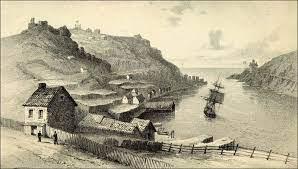
 At her reception into the Novitiate on August 2 of that same year she received the name Sister Mary Patrick Ligouri. A local newspaper, The Newfoundlander, in its August 3,1865 issue, reported on her Reception Ceremony, noting that a couple of her brothers “our respected townsmen, the Messrs. Farrell” had emigrated to Newfoundland from Ireland and were well established in the business community of St. John’s by the time their sister arrived.
At her reception into the Novitiate on August 2 of that same year she received the name Sister Mary Patrick Ligouri. A local newspaper, The Newfoundlander, in its August 3,1865 issue, reported on her Reception Ceremony, noting that a couple of her brothers “our respected townsmen, the Messrs. Farrell” had emigrated to Newfoundland from Ireland and were well established in the business community of St. John’s by the time their sister arrived. The Fourth Sunday of Easter, also known as Good Shepherd Sunday, has been celebrated as Vocation Sunday since 1964.
The Fourth Sunday of Easter, also known as Good Shepherd Sunday, has been celebrated as Vocation Sunday since 1964. 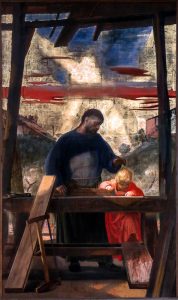
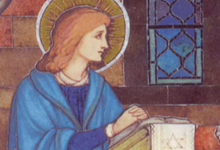 Mary, the woman we know as Mother of God, was one like us, a person who lived each day and faced the joys and the challenges of each day. We meet her first in Scripture as a frightened adolescent who is being asked to do an almost impossible thing. The last time we meet her in Scripture she is an older woman, more confident perhaps, yet still being asked to do an almost impossible thing
Mary, the woman we know as Mother of God, was one like us, a person who lived each day and faced the joys and the challenges of each day. We meet her first in Scripture as a frightened adolescent who is being asked to do an almost impossible thing. The last time we meet her in Scripture she is an older woman, more confident perhaps, yet still being asked to do an almost impossible thing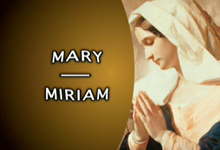 In my home province of Newfoundland and Labrador, when anyone meets a stranger, the first questions are “What is your name and who are you called after?” and “Who are your parents?” The first page of our New Testament, the beginning words of the Gospel of Matthew, could well have been written by a Newfoundlander! In these words we find the answer to the same questions about Mary
In my home province of Newfoundland and Labrador, when anyone meets a stranger, the first questions are “What is your name and who are you called after?” and “Who are your parents?” The first page of our New Testament, the beginning words of the Gospel of Matthew, could well have been written by a Newfoundlander! In these words we find the answer to the same questions about Mary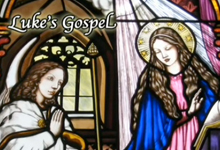 At the Annunciation, a young woman whose name is Mary is visited by an angel who tells her that she is to bear a son who will be special in many ways. When Mary challenges the possibility of this ever happening, the angel’s reply is decisive, “The Holy Spirit will come upon you” (Lk 1:35). With this assurance, the young woman replies, “Here am I, the servant of the Lord; let it be with me according to your word” (Lk 1:38)
At the Annunciation, a young woman whose name is Mary is visited by an angel who tells her that she is to bear a son who will be special in many ways. When Mary challenges the possibility of this ever happening, the angel’s reply is decisive, “The Holy Spirit will come upon you” (Lk 1:35). With this assurance, the young woman replies, “Here am I, the servant of the Lord; let it be with me according to your word” (Lk 1:38)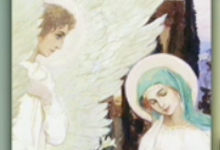 Mary’s response was immediate. She spoke the most words spoken by any woman in the New Testament. She used echoes of words spoken by the women of the Old Testament: Deborah, Miriam and Hannah. In this song, she passionately gave what the theologian Edward Schillebeeckx called “a toast to our God,” which we call the Magnificat.
Mary’s response was immediate. She spoke the most words spoken by any woman in the New Testament. She used echoes of words spoken by the women of the Old Testament: Deborah, Miriam and Hannah. In this song, she passionately gave what the theologian Edward Schillebeeckx called “a toast to our God,” which we call the Magnificat.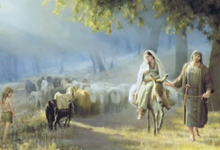 In the days before Mary was to give birth, she and Joseph were forced to go to Bethlehem to be counted for the census. They had no choice in this matter. The late stages of Mary’s pregnancy and the difficult journey from Nazareth to Bethlehem did not matter to the political leadership of the day.
In the days before Mary was to give birth, she and Joseph were forced to go to Bethlehem to be counted for the census. They had no choice in this matter. The late stages of Mary’s pregnancy and the difficult journey from Nazareth to Bethlehem did not matter to the political leadership of the day.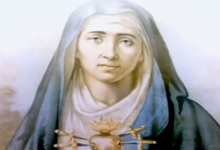 On another visit to the Temple to celebrate Passover when Jesus was twelve years old, Jesus remains behind and speaks with the teachers with authority, and then he says these mysterious words to his parents, “Did you not know that I had to be in my Father’s house?” This time the writer tells us that “His mother treasured all these things in her heart.”
On another visit to the Temple to celebrate Passover when Jesus was twelve years old, Jesus remains behind and speaks with the teachers with authority, and then he says these mysterious words to his parents, “Did you not know that I had to be in my Father’s house?” This time the writer tells us that “His mother treasured all these things in her heart.”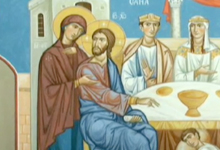 The young Jewish peasant girl has become a confident woman, a teacher, a mentor and a commanding presence. She has grown into her calling to be a partner with God in the work of Incarnation and Redemption. Having given life to her son, she now calls him into his new life of public ministry, she remains with him to support and nurture him to the end, and she will remain when he is gone to support and nurture the church which continues his presence on earth.
The young Jewish peasant girl has become a confident woman, a teacher, a mentor and a commanding presence. She has grown into her calling to be a partner with God in the work of Incarnation and Redemption. Having given life to her son, she now calls him into his new life of public ministry, she remains with him to support and nurture him to the end, and she will remain when he is gone to support and nurture the church which continues his presence on earth.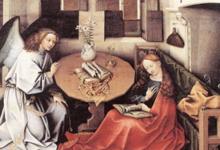 “Spirituality is that which gives us the strength to go on for it is the assurance that God is in the struggle. Spirituality spells out our connectedness to God, our human roots, the rest of nature, one another and ourselves.” In this way in 1994 the Third World Theologians redefined spirituality and began our thinking on “right relationships.”
“Spirituality is that which gives us the strength to go on for it is the assurance that God is in the struggle. Spirituality spells out our connectedness to God, our human roots, the rest of nature, one another and ourselves.” In this way in 1994 the Third World Theologians redefined spirituality and began our thinking on “right relationships.” Let us reflect on Mary in right relationship with the environment. First we must speak to our emerging understanding of ecology, a new sense of how all creation has been created by God, is good and is interconnected. In the 13th century Meister Eckhart said, “Apprehend God in all things, for God is in all things. Every single creature is full of God and is a book about God. Every creature is a word of God.”
Let us reflect on Mary in right relationship with the environment. First we must speak to our emerging understanding of ecology, a new sense of how all creation has been created by God, is good and is interconnected. In the 13th century Meister Eckhart said, “Apprehend God in all things, for God is in all things. Every single creature is full of God and is a book about God. Every creature is a word of God.”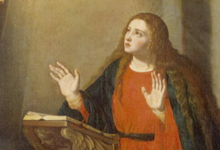 There are several beautiful passages in the Gospels in which we get an understanding of Mary’s sense of self. At the Annunciation, we see Mary’s poignant inner turmoil in the face of an awesome task being asked of her, “But she was much perplexed by his words and pondered what sort of greeting this might be” (Luke 1:29). She then asks outright the question, “How can this be, since I am a virgin?” (Luke 1:34)
There are several beautiful passages in the Gospels in which we get an understanding of Mary’s sense of self. At the Annunciation, we see Mary’s poignant inner turmoil in the face of an awesome task being asked of her, “But she was much perplexed by his words and pondered what sort of greeting this might be” (Luke 1:29). She then asks outright the question, “How can this be, since I am a virgin?” (Luke 1:34)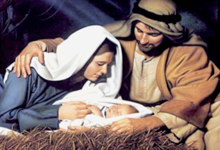 These women ancestors of Jesus suffer indignities and oppression, but live to reflect the face of God, the righteous One, the merciful One, the maternal One, the One who is found in the company of those who are marginalized, oppressed, suffering, poor and powerless. Jesus, the son of Mary, has indeed inherited the qualities of his foremothers.
These women ancestors of Jesus suffer indignities and oppression, but live to reflect the face of God, the righteous One, the merciful One, the maternal One, the One who is found in the company of those who are marginalized, oppressed, suffering, poor and powerless. Jesus, the son of Mary, has indeed inherited the qualities of his foremothers.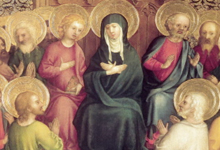 The beautiful prayer of the Magnificat which Luke ascribes to Mary is a powerful description of Mary in right relationship with other people. While the first part of her psalm focuses on Mary in relationship with her God, the second part expresses Mary’s love for people. Mary rejoices in God her Saviour because God‘s mercy is from generation to generation.
The beautiful prayer of the Magnificat which Luke ascribes to Mary is a powerful description of Mary in right relationship with other people. While the first part of her psalm focuses on Mary in relationship with her God, the second part expresses Mary’s love for people. Mary rejoices in God her Saviour because God‘s mercy is from generation to generation.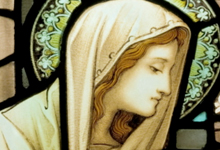 Mary was first and foremost a Jewish woman, a practicing Jew who remained faithful to Judaism. She would have been aware of the Hebrew Scriptures, the sacred books she called Torah and we Christians call the Old Testament. She bears the name of the leader Miriam about whom God said in the book of Micah (6:4), “I brought you up from the land of Egypt, and redeemed you from the house of slavery; and I sent before you Moses, Aaron, and Miriam
Mary was first and foremost a Jewish woman, a practicing Jew who remained faithful to Judaism. She would have been aware of the Hebrew Scriptures, the sacred books she called Torah and we Christians call the Old Testament. She bears the name of the leader Miriam about whom God said in the book of Micah (6:4), “I brought you up from the land of Egypt, and redeemed you from the house of slavery; and I sent before you Moses, Aaron, and Miriam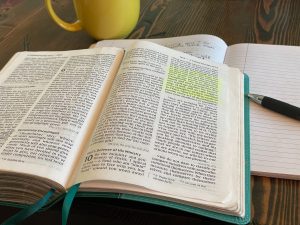 Sister Elizabeth’s reflections are published online in the Spirituality section under the appropriate liturgical season. They can be read online or downloaded.
Sister Elizabeth’s reflections are published online in the Spirituality section under the appropriate liturgical season. They can be read online or downloaded.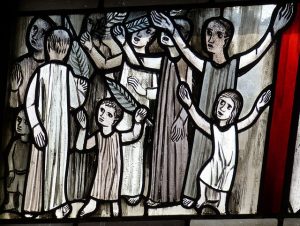 We begin our liturgy today with Jesus’ entry into Jerusalem, as the people shout, “Hosanna to the Son of David! Blessed is the one who comes in the name of the Lord! Hosanna in the highest heaven!” (Matt 21:9). The people were rejoicing in the coming of the Messiah, but they were placing all their hopes in a Messiah who was a king, a mighty and powerful leader, certainly not a Messiah who was a suffering servant, who would die by the lowest form of death possible – crucifixion. They were right to trust in this Prophet Jesus from Nazareth in Galilee. They were mistaken in understanding how this Prophet, this Son of David, this one who was coming in the name of the Lord, would lead them into new life. These same people, when their hopes seem lost, mock Jesus and choose the man Barabbas over him…
We begin our liturgy today with Jesus’ entry into Jerusalem, as the people shout, “Hosanna to the Son of David! Blessed is the one who comes in the name of the Lord! Hosanna in the highest heaven!” (Matt 21:9). The people were rejoicing in the coming of the Messiah, but they were placing all their hopes in a Messiah who was a king, a mighty and powerful leader, certainly not a Messiah who was a suffering servant, who would die by the lowest form of death possible – crucifixion. They were right to trust in this Prophet Jesus from Nazareth in Galilee. They were mistaken in understanding how this Prophet, this Son of David, this one who was coming in the name of the Lord, would lead them into new life. These same people, when their hopes seem lost, mock Jesus and choose the man Barabbas over him…